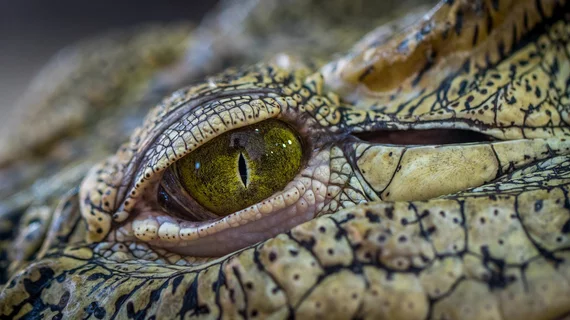Researchers use fMRI to study the brains of crocodiles
It’s no secret that researchers often use MRI equipment in creative ways. That trend has been continued by a group that turned to functional MRI (fMRI) to view the brains of crocodiles as they were exposed to various sounds.
The researchers, led by Felix Ströckens, PhD, from the department of biopsychology at Ruhr-Universität Bochum in Bochum, Germany, concluded that “complex stimuli triggered activation patterns in the crocodile’s brain that are similar to those in birds and mammals.” The group’s findings were featured in a study published by Proceedings of the Royal Society B: Biological Sciences.
“Analyses of crocodile brains thus provide deep insights into the evolution of the nervous system in mammals and may help us understand at which point certain brain structures and behaviors associated therewith were formed," Ströckens said in a prepared statement.
Capturing the actual images provided the group with some technical challenges, researcher Mehdi Behroozi explained in the same statement.
“In the first step, we had to overcome a number of technical obstacles,” Behroozi said. “For example, we had to adjust the scanner to the crocodile's physiology, which differs massively from that of mammals in several aspects.”

